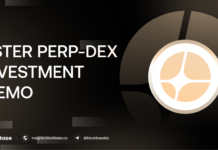Recently, after the meme coins rampage in the market, GameFi projects heating up again. One project recently turned the spotlight on is Pirate Nation due to the crazy airdrop. Season 1 finished on June 10 this year.
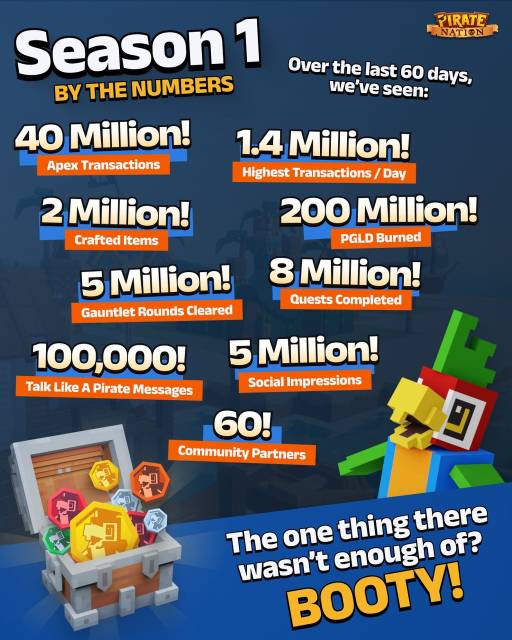
Let’s first take a look at the game before diving into any high-level concept. Pirate Nation team’s Twitter thread so they can address your questions directly.
1. Overall the game and team
Pirate Nation is a fully on-chain game. Three primary reasons said by the founding team:
- Permanence: a game that lives permanently on the blockchain
- Composability: remix, mod, and co-create with the community
- Interoperability: content usable across different game worlds
Pirate Nation is a crew of founders, developers, and crypto-native tinkerers. The team members have experience leading developments on $1 billion+ franchises such as FarmVille and Madden at Epic Games, Blizzard, Riot Games, Zynga, and Nifty Games.
- Amitt Mahajan (Co-Founder & CEO): Having almost a decade of professional experience, he started Toro, a firm that was eventually bought by Google. Being involved in both the engineering and investment sides of tech firms. Legend in the cryptocurrency world, he launched Rare Bits, an NFT marketplace, in 2018.
- Craig Woida (Co-Founder): Former colleague and game designer for Amiit when they were both employed at FarmVille.
Find more of our team bios here: Team
A public roadmap featuring upcoming features like a leaderboard, boss fights, marketplaces, maps, guilds, and more was released by the team. Up until now, the team has released essential features, including Boss Fight v1 and customizable land v1.
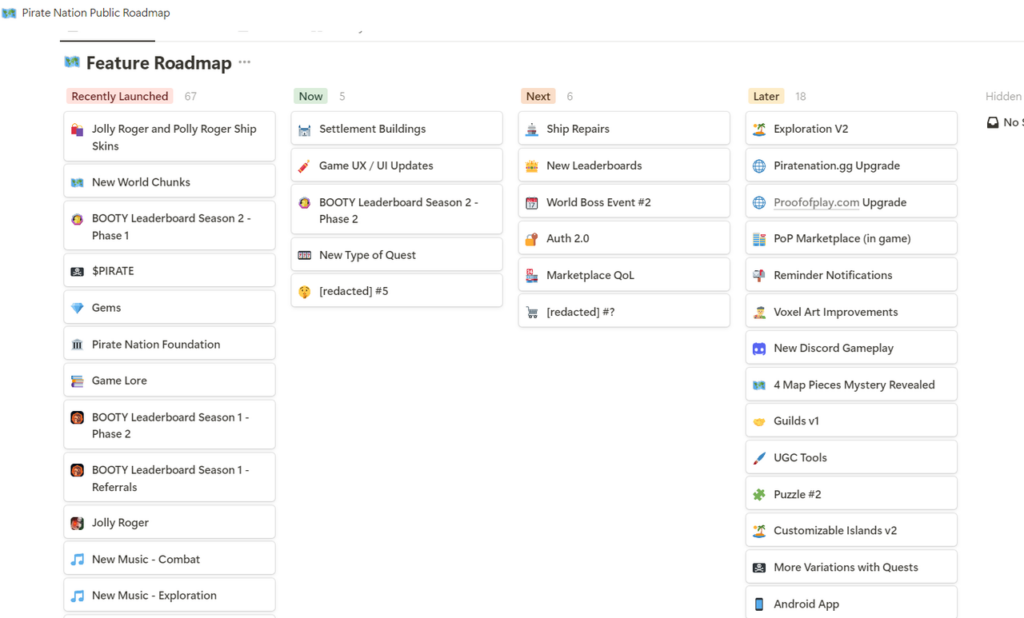
The game’s mechanism remains easy to understand. Card-based turning games have two modes PvE and PvP.
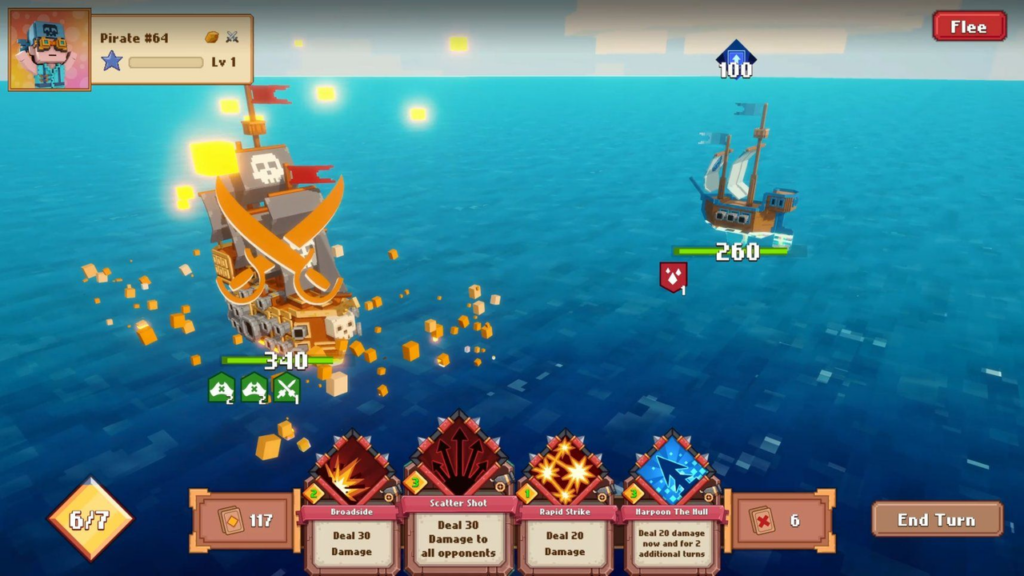
The game will be turn-based, with each turn giving us 5 action points. When you look at the cards, you will see numbers next to them, which indicate the amount of action points that can be consumed when using them. For example, as shown on the screen, the action points will be 2, 3, 0, 0, 1, 0.
Below each card, there are descriptions of the function and utility of each type of card.
There will be 5 main types of cards for you to choose from when engaging in battle, each with different functions:
- Damage Cards: The main purpose is to inflict damage on the opponent.
- Defense Cards: The main purpose is to reduce the damage received from the opponent.
- Control Cards: Help diversify the player’s strategy with features such as adding action points, drawing additional cards, etc.
- Manipulation Cards: Help increase the damage of damaged cards, add effects such as stun, and armor reduction, and even help the player dodge attacks.
- Healing Cards: Used to restore health, remove negative effects caused by the opponent, etc,…
And here is the sweet spot. After winning each round, you will earn Booty points, Command points, and items and Mark. The more Booty points you have, the more airdrops you will receive.
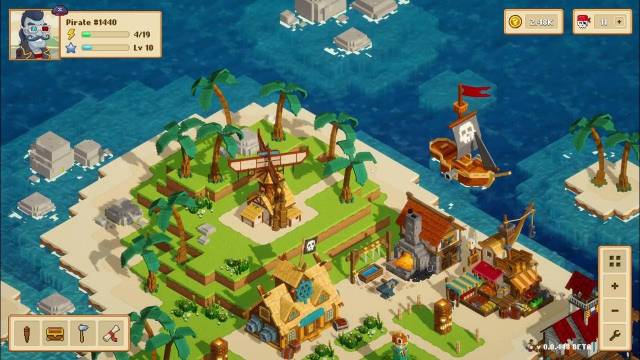
The game also has other features like upgrading ships, and crew as well as participating in Quest, Bounty.
Overall, we can say that the game mechanism can give the repeatable play needs with cool graphics and a steady development plan.
2. The money part
So what is the catch here? Who is the winning side of this type of project, specifically the model applied like Pirate Nation? In the analyst’s view, it is everyone in general terms.
First, to prove our point, let’s look closer into the interest between parties and their incentives for them
2.1. The game studio – supply side
They have 2 main playbooks for monetization:
- Pay to play: The original and oldest model. This is when the price of producing cost of a game is high and needs the cash return quickly. Top names like Call of Duty, Gods of War, The Witcher,… It costs a million dollars and working hours to release. Here is the graph of major cost and revenue sources for the gaming studio.
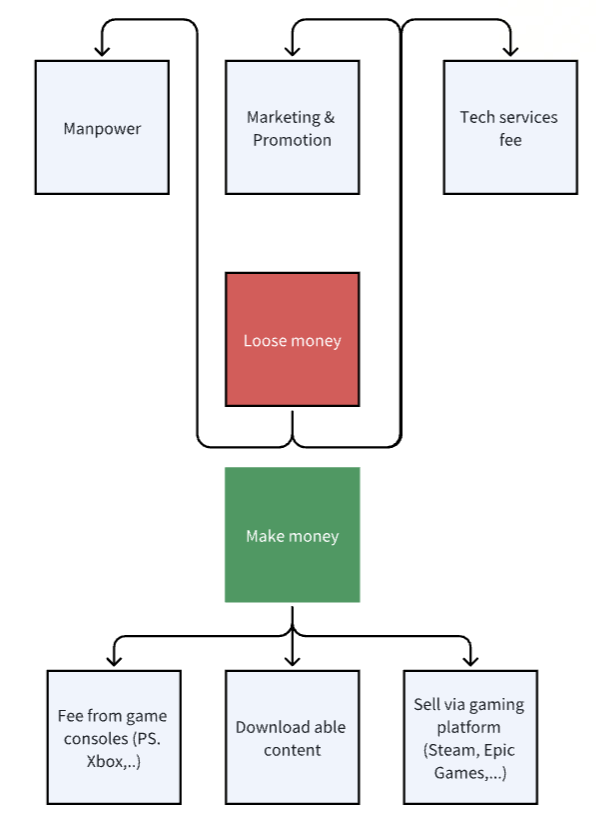
- Free to play: This model popped up in the 2000s with the rise of smartphones and widespread web games despite some major well-known games like League of Legends, and Dota2 bearing the high cost of production and adopting in-game purchasing models. Still, the majority of these types of games are game apps and web games. These games are easy to produce and their main revenue stream is by ads and players in the game purchasing skins and items.
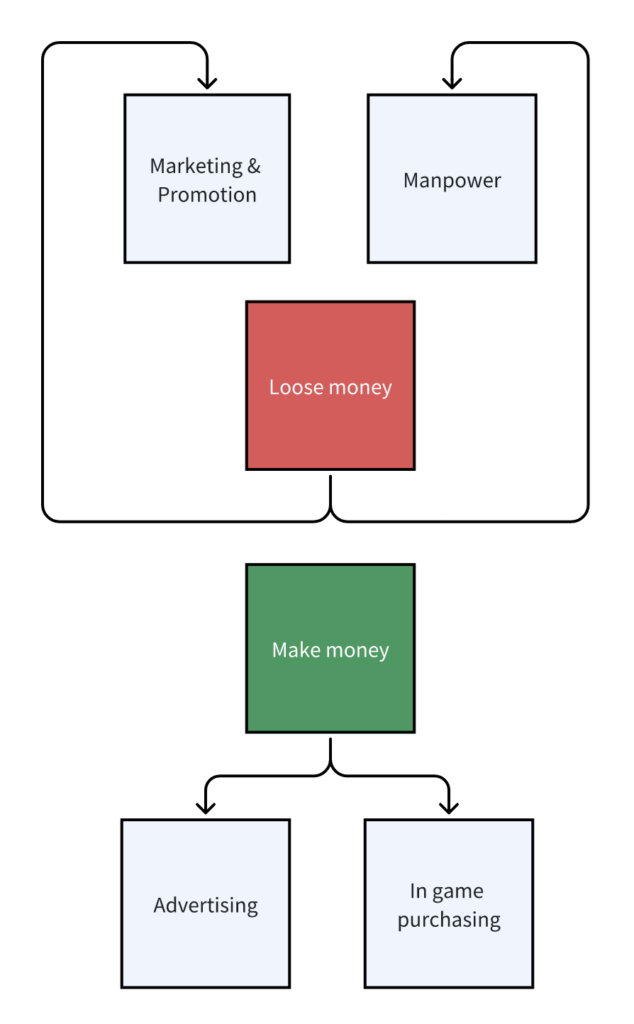
Now let’s look back at the standard GameFi play to earn models back in the day and what we see today with Pirate Nation, a high-level concept graph below.
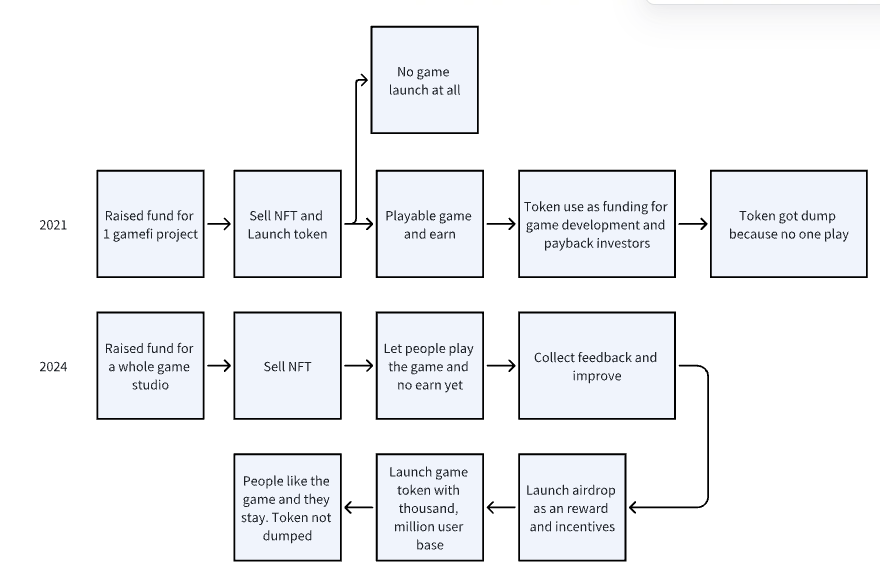
In our view, it does not just play to earn anymore, now it involves play and earning, the play part is much more important than the earning part if GameFi we see this year wants to break into mass adoption. Reality check, we already see people spend money to buy games with no need for financial rewards back. Normal people see games as entertainment, not a job to hustle. We think that’s what matters most. An earnable game is just a plus to a well-played and fun game.
Playing airdrop is key to this new GameFi model. Instead of consuming money into ads and marketing tactics, we use play to airdrop as a kick-off for a cold start to product scaling. A game can not have a good network effect if no one plays in the beginning.
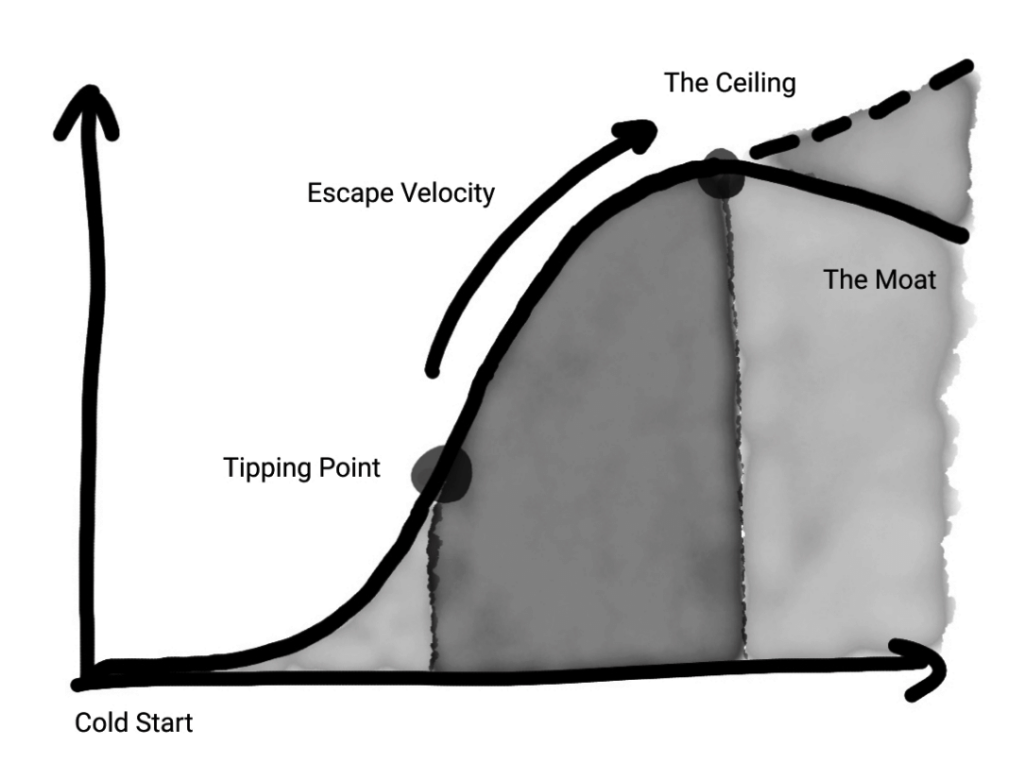
Proof of play, doing tasks and quests in-game, and letting them play to get airdrop is a useful tactic to onboard people first and Pirate Nation is an example of how a dedicated team with a sustainable tokenomics model can pull this off. Here is a quick snapshot of the token price on June 24, 2 weeks after the airdrop for players to see a healthy community backing Pirate Nation.
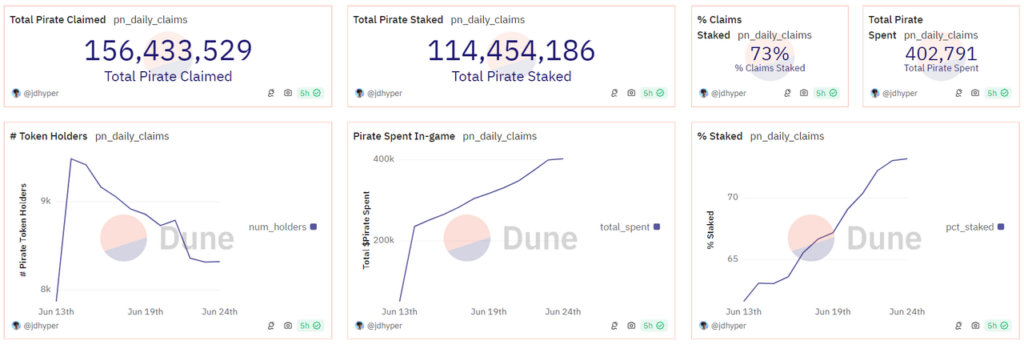
2.2. On the demand side – players
You can see some logic in this argument as well as a trade-off for a fast and large sum of money for a more sustainable and funnier gameplay experience. Earn like you doing a freelance job but not working.
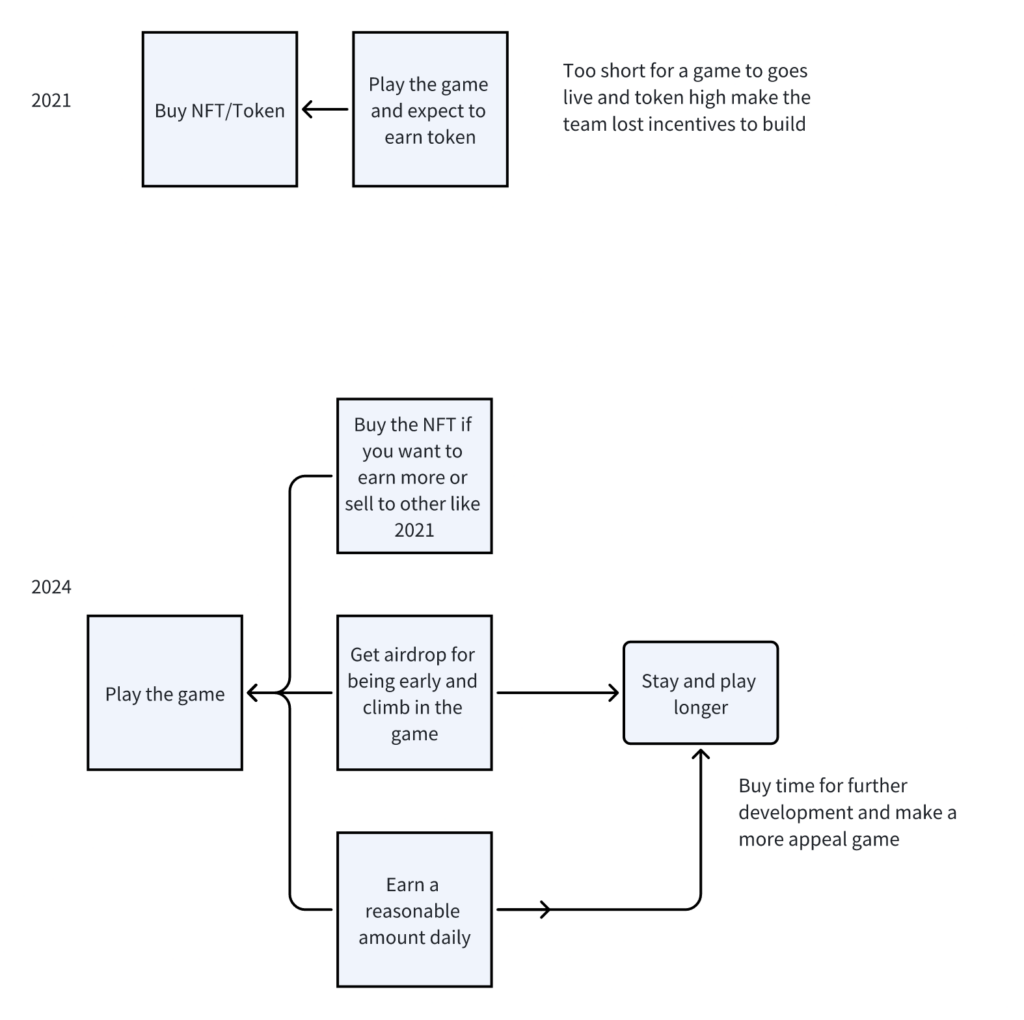
The problem we believe with the old model is not letting people stick in and only onboard investors-users into the game rather than true gamers who found it nice to earn a little bit of money on the side.
We believe that the rug got pulled so fast last season in 2021, not enough players came to scale the game, not enough development got invested not a loyal enough community to make the game stick and too many investors came as players and left when financial incentives dropped out. With the new model, not every game needs to be a hit and we get rid of bad teams, bad games, and pump dump models. It just means that the good ones, a good project can use this as a way to better market their game, gain first traction and find the game market fit sooner, and then lead the game to mass adoption with the same proposition Gamefi did last cycle play the game you like and earn some as reward rather than rely on an entire full-time job or income on it.
So some of the traits BlockBase will look into when selecting some GameFi to play and investing with this playbook:
- Build by a capable team that knows technical skills and has a proven track record with their names on the line
- Easy to play and learn from the mechanism. We don’t have the Dota2 version on Web3, yet!
- In a native blockchain that can give early web3 fans/players access at the first start. The best example, is Ronin. Pixels from 4.7k to 115k DAU (24x DAU since onboard to Ronin. Apeiron game from 50 to 10.9k DAU (216x);
- From then kickstarts a good early beta player base. Update new features and not yet let people earn tokens and buy time for the team to develop more and users get locked into the system. Pixels locked up its user base almost a year before launching its token, capturing the economy within;
- A healthy dose of marketing and FOMO after airdrop with token not dumped too hard.
The information provided in this article is for reference only and should not be taken as investment advice. All investment decisions should be based on thorough research and personal evaluation.



